Top Image: Lieutenant Walt Ehlers, in dress uniform wearing the Medal of Honor. The National WWII Museum, The Walter D. Ehlers Collection, OH.0677.
When American troops landed on Omaha beach on June 6, 1944, most of them had not been in combat. The exception was most of the GIs in the 1st Infantry Division, men like Walt Ehlers. Born in Junction City, Kansas, in 1921, Ehlers lived with his grandfather while he was attending high school. Letters from family in Germany to his Grandfather Ehlers gave the young Walt good insight into the worsening conditions in Germany and made him aware that a war was inevitable.
In October 1940, Ehlers’ brother Roland, who was four years his senior, decided to enlist in the US Army. The Selective Service Act meant Roland was likely to be drafted, but he preferred to volunteer. Walt, at 19 years old, decided to follow his brother and enlist. To do so required his parents’ consent, so he returned home and spoke to his parents. His father had no issues signing, but as Ehlers recounted in his oral history, his mother had one request: “My mother looked me square in the eye and she said, ‘Son.’ She says, ‘I’ll only sign on one condition: you promise to be a Christian soldier.’ So I told her—well, I was a little bit taken aback, but I said, ‘I’ll do my very best.’” Ehlers carried that promise with him, though at times it put him at odds with what was required of him as a soldier: “To justify being able to kill the enemy, because that was my duty. I was fighting for freedom. That’s all we’ve fought for in the United States Army, from the Revolutionary War up to the current wars. World War I and then World War II, that was for freedom. We fought Nazism, fascism and imperialism, and all three nations became democracies after the war was over.”
-

Walt, on the left, with his mother Marie and brother Roland. The National WWII Museum, The Walter D. Ehlers Collection, OH.0677.
-

Shoulder patch for the 1st Infantry Division, which took its nickname “Big Red One” from the distinctive patch. The National WWII Museum, Gift of Colonel Keith Schmedemann, 2009.384.001.
Walt and Roland remained together through training and landed together in North Africa in November 1942, with the 3rd Infantry Division. Later, the brothers were reassigned to K Company, 18th Infantry Regiment, 1st Infantry Division. The 1st Division engaged in tough fights with German forces in North Africa, including El Guettar. After North Africa, the Ehlers brothers landed with the 1st Division in Sicily in July 1943, landing at Gela. In Sicily, the “Big Red One” as the division was known, suffered over 1,700 casualties in five weeks, and many others were weakened by malaria, jaundice, and malnutrition. Despite its depleted ranks, the 1st Division had been selected to participate in the invasion of Northern France. It was to be their third amphibious operation—and the largest, deadliest yet.
The Ehlers brothers arrived in England with the 1st Division in November 1943. In an effort to hide the division’s movements, the men were required to remove their well-known division patches. After months of training and preparation together in England, the Ehlers brothers were forced to split up for the first time since they had enlisted over three years before. Roland remained with K Company, while Walt was reassigned to L Company. After the loss of the Sullivan brothers, the US military attempted to separate siblings in the hope it would reduce the likelihood of families losing multiple sons in one engagement. On June 6, as Roland and other men of K Company attempted to leave a landing craft, a mortar struck the vessel, killing Roland and others instantly. It was weeks before Walt learned of his brother’s death.
Walt was more fortunate on June 6, and though the enemy resistance was fierce, L Company pressed on, fighting into the hedgerows in Normandy where Ehlers, then a squad leader in his platoon, led his men into close quarter combat with German forces:
“On the 9th of June, we were sending out a platoon in this field over here…When they got fired on over there, I didn’t want to get caught out in the middle of a field. So, I rushed my men up to the hedgerow in front of me with me. And then, because I was the experienced one in combat, I could smell the Germans before I could see them. I just went down the hedgerow and I started going up this hedgerow because the sound of machine guns was down in a corner down there, that next hedgerow and back down—up around there.
I went up on the bank, and I heard some rattling, and I came face-to-face with four Germans on patrol. All of them had their guns pointed at me. They were pretty close together, like maybe as far as this room is wide. And I didn’t have any choice. I had to make a real fast decision. Either I shot them or they’re going to shoot me. So I just went like this, pulled my trigger four times, and got all four of them. And then I started up the hedgerow.
I had my men affix bayonets, because here these guys were, right here in front of me. And I had to reload. So I reloaded, and I had all the guys fix their bayonets; they followed me up the hedgerow. I came upon a machine gun nest out there, and I ran out there and knocked the guy out. I think the guy was still alive. The guys said, “Stab him.” I said, “Stab him? I’ve still got bullets in my gun.” I shot him, but I wasn’t going to stab anybody with my bayonet if I didn’t have to.
Then we came to this—there was a mound back there, and I went up on the mound. There was—right below the mound, in the back of that mound, was two mortar positions, 80 mm type mortars, the big heavy ones, they had to be placed there by weapons carriers or something like that. The weapons carriers weren’t there, but the men were there. They had the guns in position all ready to shoot them and all that stuff. And when they saw me coming up there, their eyes got big. I asked them to halt, and they wouldn’t. They started to turn. And the other men came up with me, and of course, they really got frightened and ran. Well, we had to shoot them all in order to stop them, because—I told them that they had to shoot them, or else they were going to have to fight them again.
The next day, next morning, we had this similar situation come up again, because you know hedgerows. It’s all the same anywhere you go, because there’s square fields all the way around you. So we’re going up this next hedgerow that we were attacking. Our squad got clear up to almost the hedgerow in front of us, like right up along here. There’s a hedgerow over here, a hedgerow over there, and two across the front there. When we’re going up there, we start getting fire from here and from here.
The company commander said to withdraw, because we had to go at this from a different situation. You know, you couldn’t penetrate with one squad in there. And I knew that if we turned around, why, they’d probably shoot us all in the back. So I went up on the hedge, on a kind of a mound. There was a little mound sitting there on the right. I went up there, and I started firing on the left. An automatic rifleman came up, and he fired around to the right to keep the Germans pinned down. We kept them pinned down, and our squad got back to the hedgerow behind us. Then we turned around to come back, and I saw them putting a machine gun down in a corner down there.
I’m busy shooting at these three guys who are putting in the machine gun down there when I get hit in the back. It hit me in the back, went into my rib area, glanced off of the rib, went out— made two holes: one where it went in, one where it came back—and went into my pack. It hit a bar of soap and went through my mother’s picture there, and it came out my trench shovel in the back.
Walt carried this photo of his mother in his pack. When Walt was shot the bullet ripped through the card holding the photograph. The National WWII Museum, Gift of Walter D. Ehlers, 2014.524.007.
But I got up and went over and picked up the AR man, and I saw him lying on the field when I got up. So I carried him back, even though I was wounded myself. My arms and legs were fine. He had a right leg wounded, and he couldn’t walk. And his right arm was wounded, and he couldn’t carry his rifle. After I got him back behind the hedgerow and turned him over to the medics, I went back and got his rifle under fire, and I came back.
After I got back, when we started loading the automatic rifleman on the ambulance, I told the company commander, ‘You better have the medics look at that wound in my back.’ He said, ‘You’ve been wounded?’ I said, ‘Yeah.’ He turned me around, and he saw that bullet hole come through my trench shovel. He says, ‘My god, you should be dead. You’ve been shot clear through.’ I said, ‘Oh, no.’ So they took the pack off and they saw what happened, you know. And it was kind of a miracle. I don’t know. It looked like I should have been dead, but I wasn’t.
Actually, the word went around that Sgt. Ehlers had been shot. And sometime later in the day, I met some other people that said, ‘We thought you were dead.’ (laughs) They passed the word around real quick. Rumors in the Army goes by word by mouth. You’d be surprised the amount of rumors we have go by. You always get rumors about the next hill and things like this.
But we got through this. And that’s the day for which I received my Medal of Honor. But I didn’t know I was getting a Medal of Honor that day. I didn’t have the least idea of what was happening. I went on. I refused to be medevacked. I didn’t have to carry my pack, because I had a dressing put on my back, and I couldn’t carry a pack because it would have rubbed a good couple of wounds there. So I carried bandoliers over my shoulder on this side, so it didn’t bother my back at all, and I carried my rifle, went on to lead my squad.”
Ehlers continued to lead his squad in Normandy, where he was wounded again fighting at Saint-Lo and later, in the Hürtgen Forest. It was during a train ride to rejoin his outfit after recovering from wounds he received fighting in the Hürtgen Forest that Ehlers learned he had been awarded the Medal of Honor. A fellow GI reading Stars and Stripes thought it was Ehlers’ brother, Roland, who was getting the Medal, not knowing the two by their first names. When Ehlers reported to the Command Post, a colonel asked him what he was doing there, telling him he was supposed to be back in the United States to receive the Medal of Honor from the President. Ehlers had also earned a battlefield commission and was commissioned as a second lieutenant on December 9, 1944. In mid-December, Lieutenant Ehlers was sent to Paris, where he received the Medal of Honor from General John C.H. Lee on behalf of President Roosevelt.
-

This photo of Walt was taken on December 6, 1944. Just days before he learned he was to receive the Medal of Honor and receive a battlefield promotion to officer rank. The National WWII Museum, The Walter D. Ehlers Collection, OH.0677.
-

Walt received the Medal in Paris, France, in December 1944. Official US Army Photo, from the National Archives.
-

The December 8, 1944, edition of Stars and Stripes, where Walt first read of receiving the Medal. The National WWII Museum, Gift in Memory of Walter Ehlers, 2018.119.
After 30 days leave in the United States, Ehlers returned to Europe in time to join C Company of the 18th Infantry Regiment in fighting in the Rhine River valley in March 1945. Ehlers survived an accidental shooting that spring, which left a .30 caliber bullet in his leg, and a Jeep accident in July, which left him bruised but not severely injured. After three years of fighting, Ehlers returned home and retired from the Army, confident that he had served well, and kept his promise to his mother as he fought for God and country.
Medal of Honor Citation
For conspicuous gallantry and intrepidity at the risk of his life above and beyond the call of duty on 9-10 June 1944 near Goville, France. S/Sgt. Ehlers, always acting as the spearhead of the attack, repeatedly led his men against heavily defended enemy strongpoints, exposing himself to deadly hostile fire whenever the situation required heroic and courageous leadership. Without waiting for an order, S/Sgt. Ehlers, far ahead of his men, led his squad against a strongly defended enemy strongpoint, personally killing four of an enemy patrol who attacked him en route. Then crawling forward under withering machine-gun fire, he pounced upon the gun-crew and put it out of action. Turning his attention to two mortars protected by the crossfire of two machine guns, S/Sgt. Ehlers led his men through this hail of bullets to kill or put to flight the enemy of the mortar section, killing three men himself. After mopping up the mortar positions, he again advanced on a machine gun, his progress effectively covered by his squad. When he was almost on top of the gun he leaped to his feet and, although greatly outnumbered, he knocked out the position singlehandedly. The next day, having advanced deep into enemy territory, the platoon of which S/Sgt. Ehlers was a member finding itself in an untenable position as the enemy brought increased mortar, machine-gun, and small-arms fire to bear on it, was ordered to withdraw. S/Sgt. Ehlers, after his squad had covered the withdrawal of the remainder of the platoon, stood up and by continuous fire at the semicircle of enemy placements, diverted the bulk of the heavy hostile fire on himself, thus permitting the members of his own squad to withdraw. At this point, though wounded himself, he carried his wounded automatic rifleman to safety and then returned fearlessly over the shell-swept field to retrieve the automatic rifle which he was unable to carry previously. After having his wound treated, he refused to be evacuated, and returned to lead his squad. The intrepid leadership, indomitable courage, and fearless aggressiveness displayed by S/Sgt. Ehlers in the face of overwhelming enemy forces serve as an inspiration to others.
Kali Martin
Kali Martin is a former Research Historian of The National WWII Museum's Jenny Craig Institute for the Study of War and Democracy.
Cite this article:
MLA Citation:
APA Citation:
Chicago Style Citation:
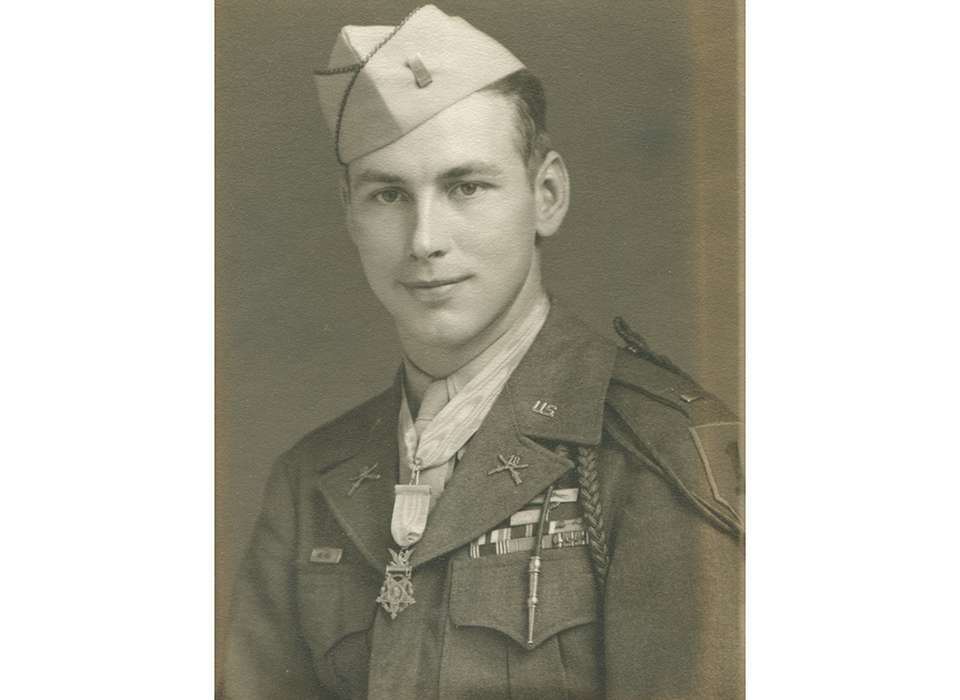
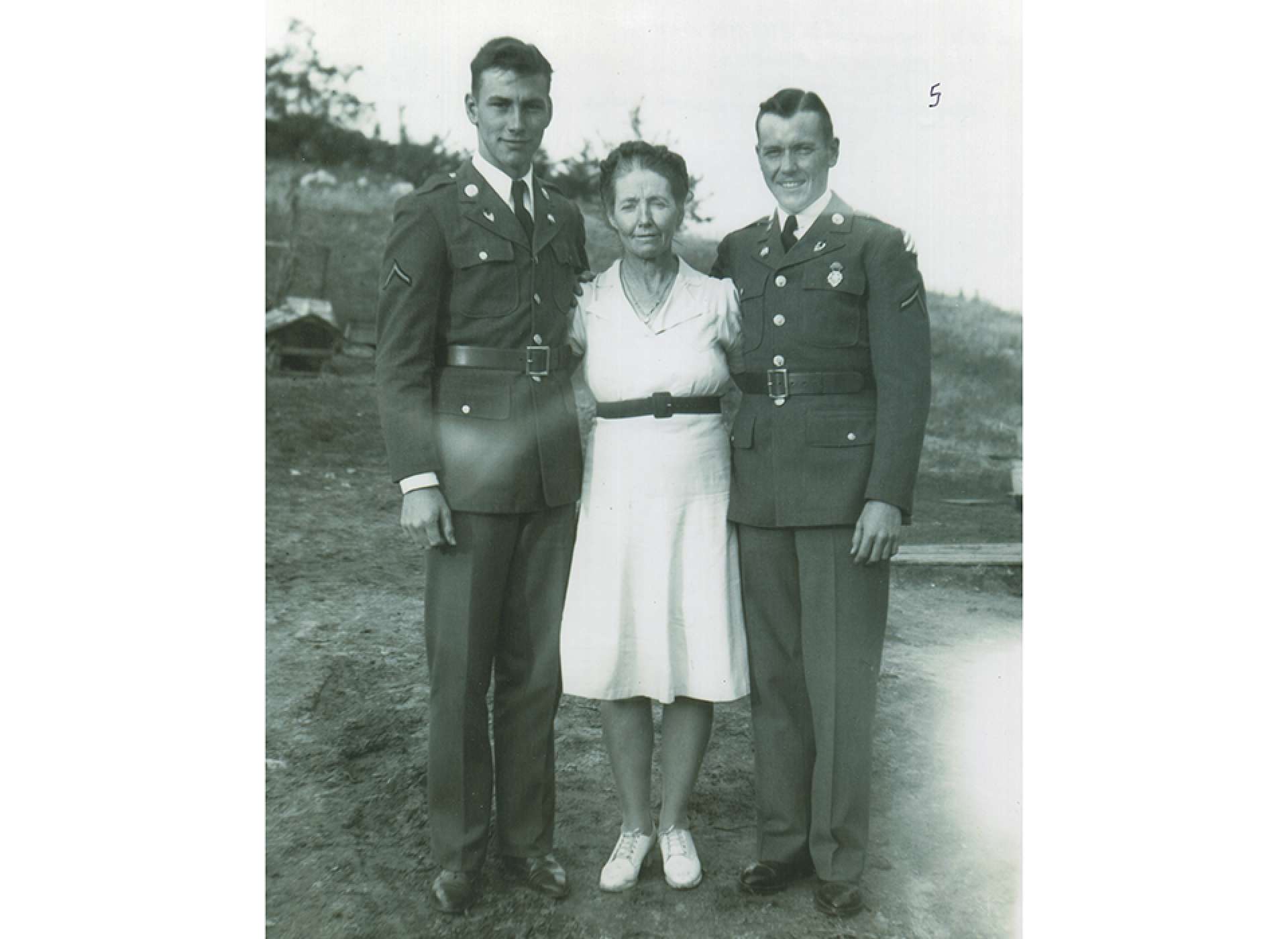
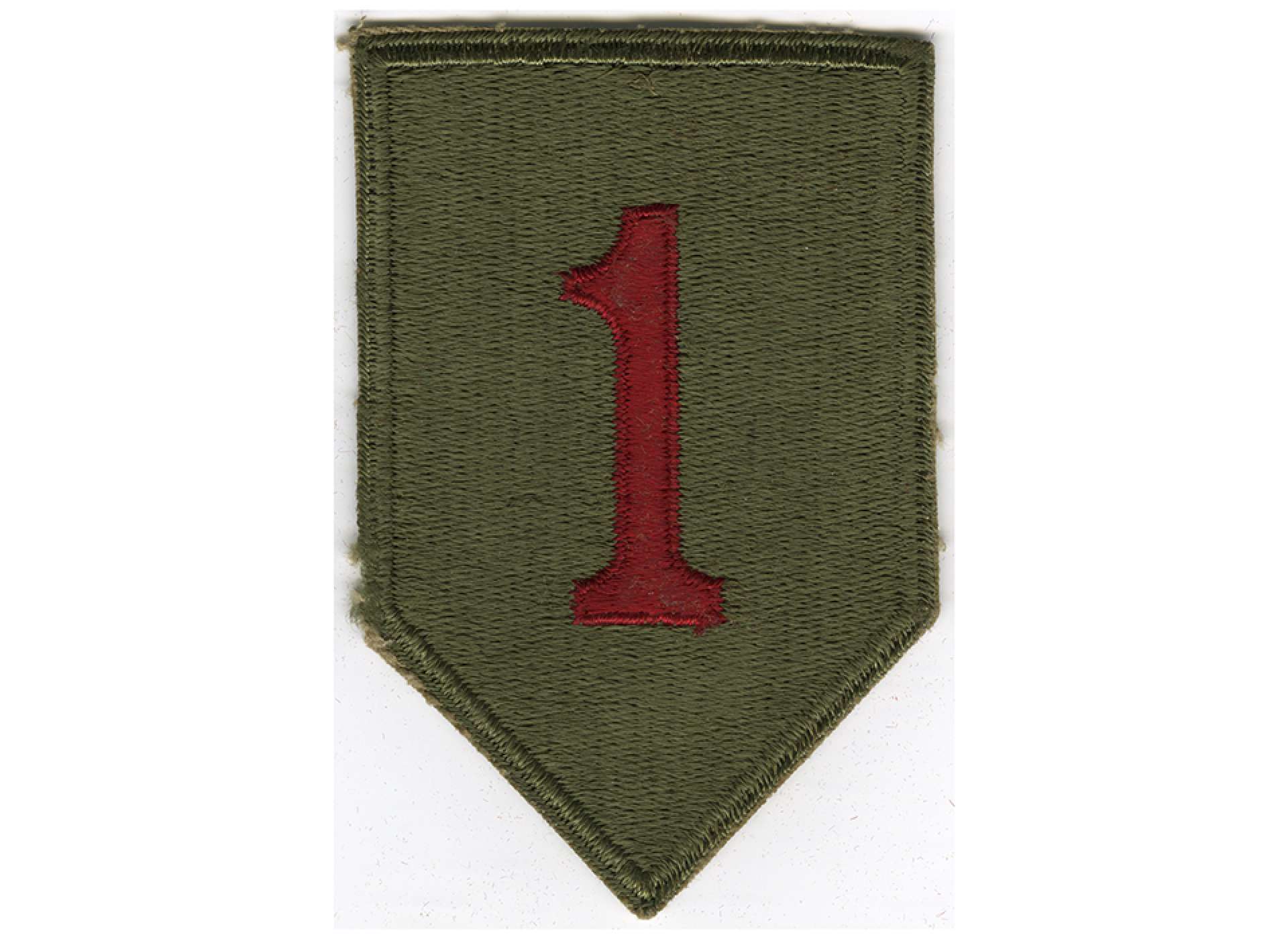
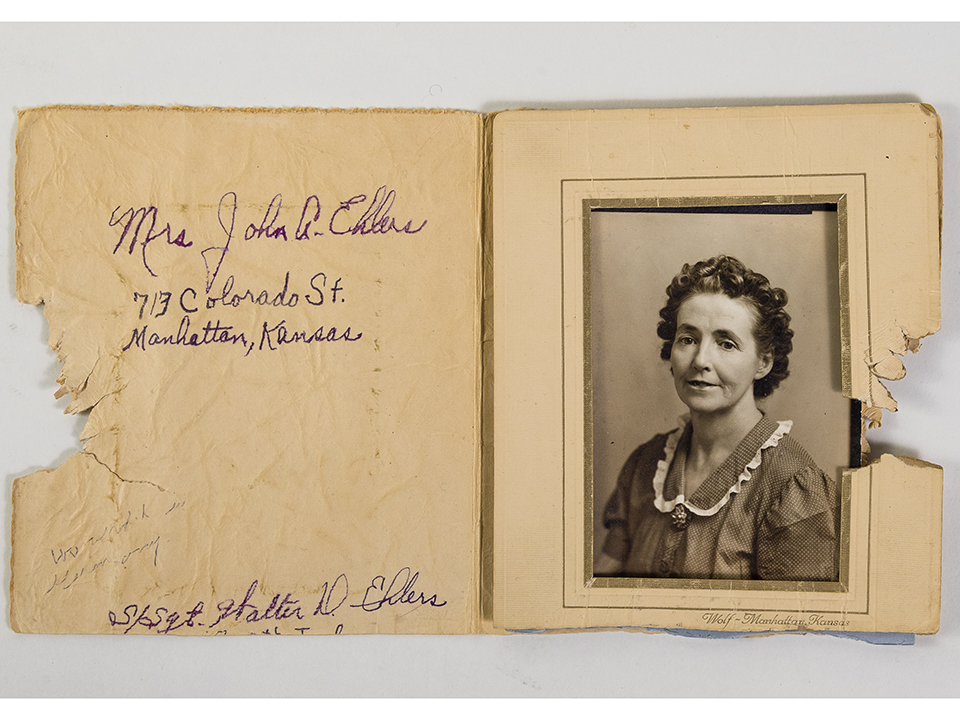
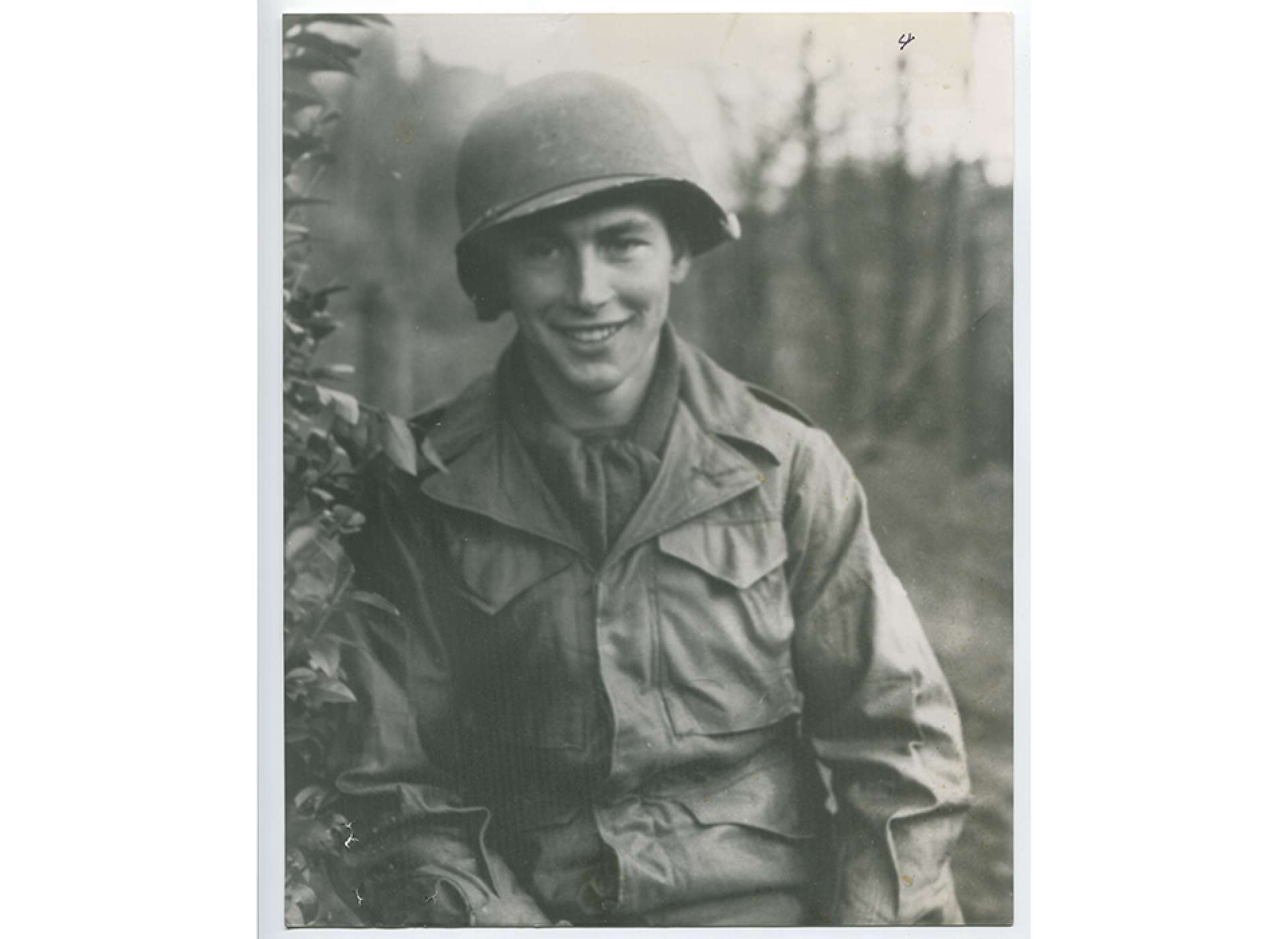
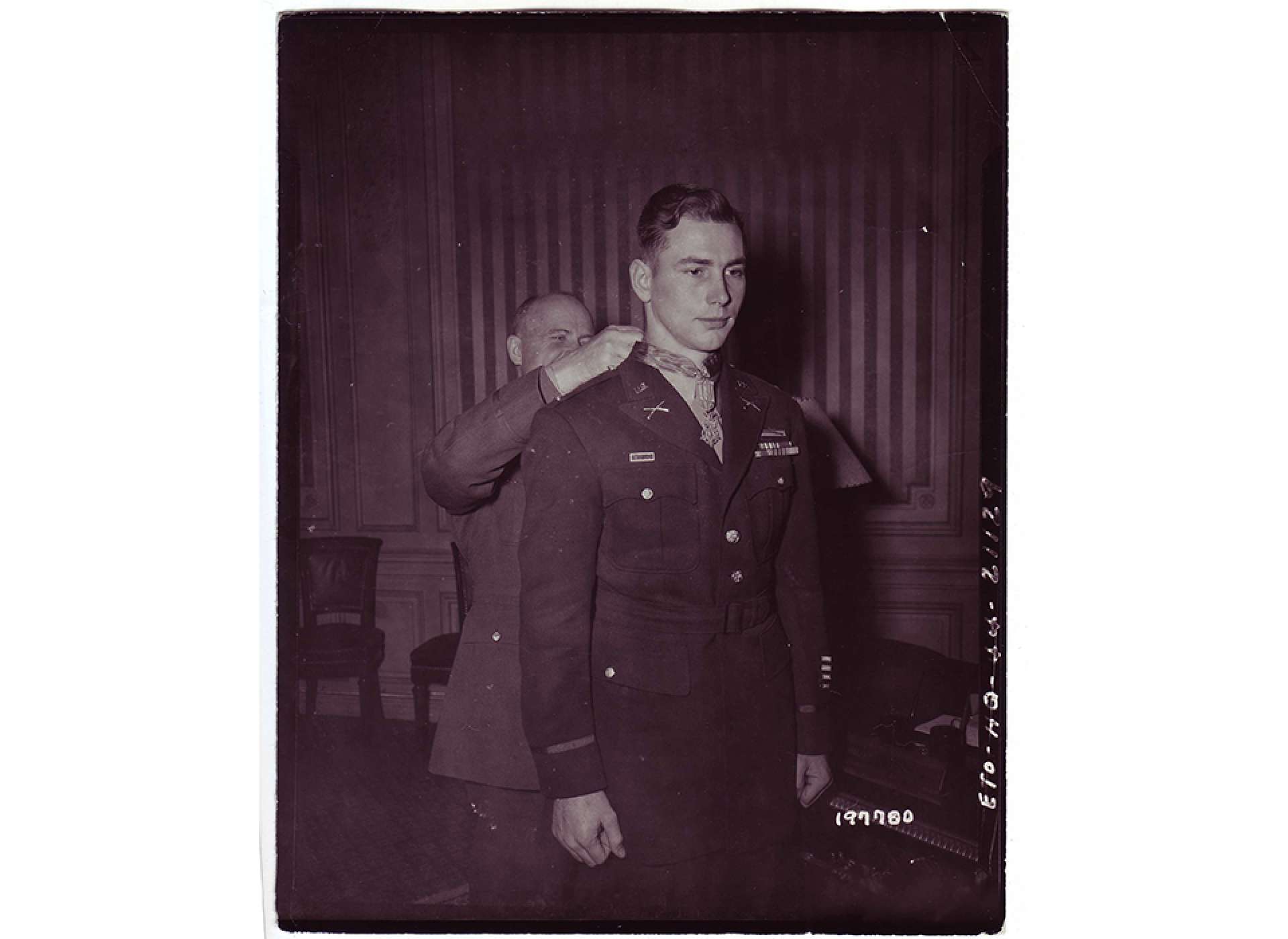
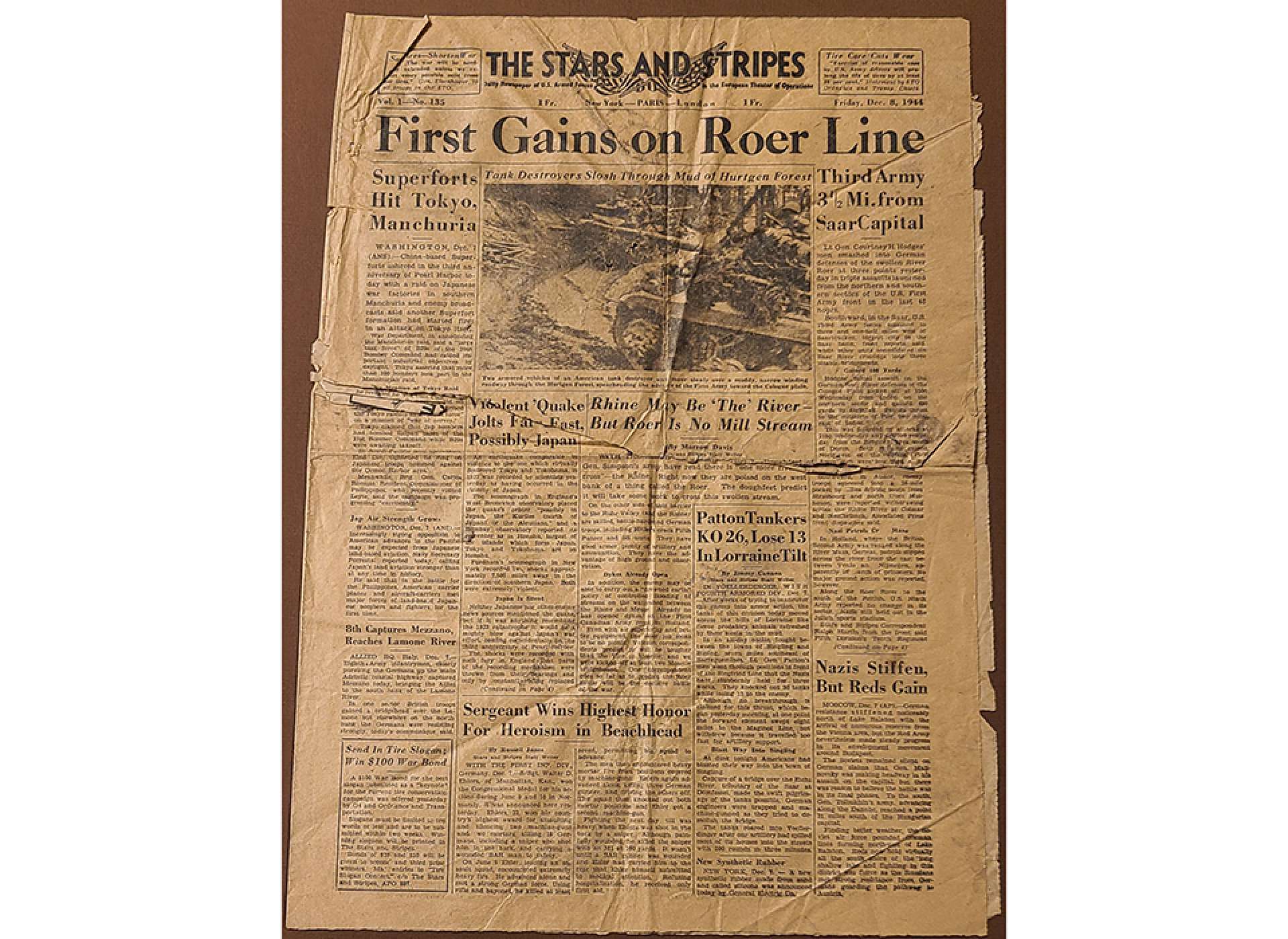




![Max Fuchs, New York City cantor, sings as Rabbi Sydney [sic] Lefkowitz, Richmond, VA, conducts the first Jewish services from Germany.](/sites/default/files/styles/max_650x650/public/2025-10/image1.jpg)



